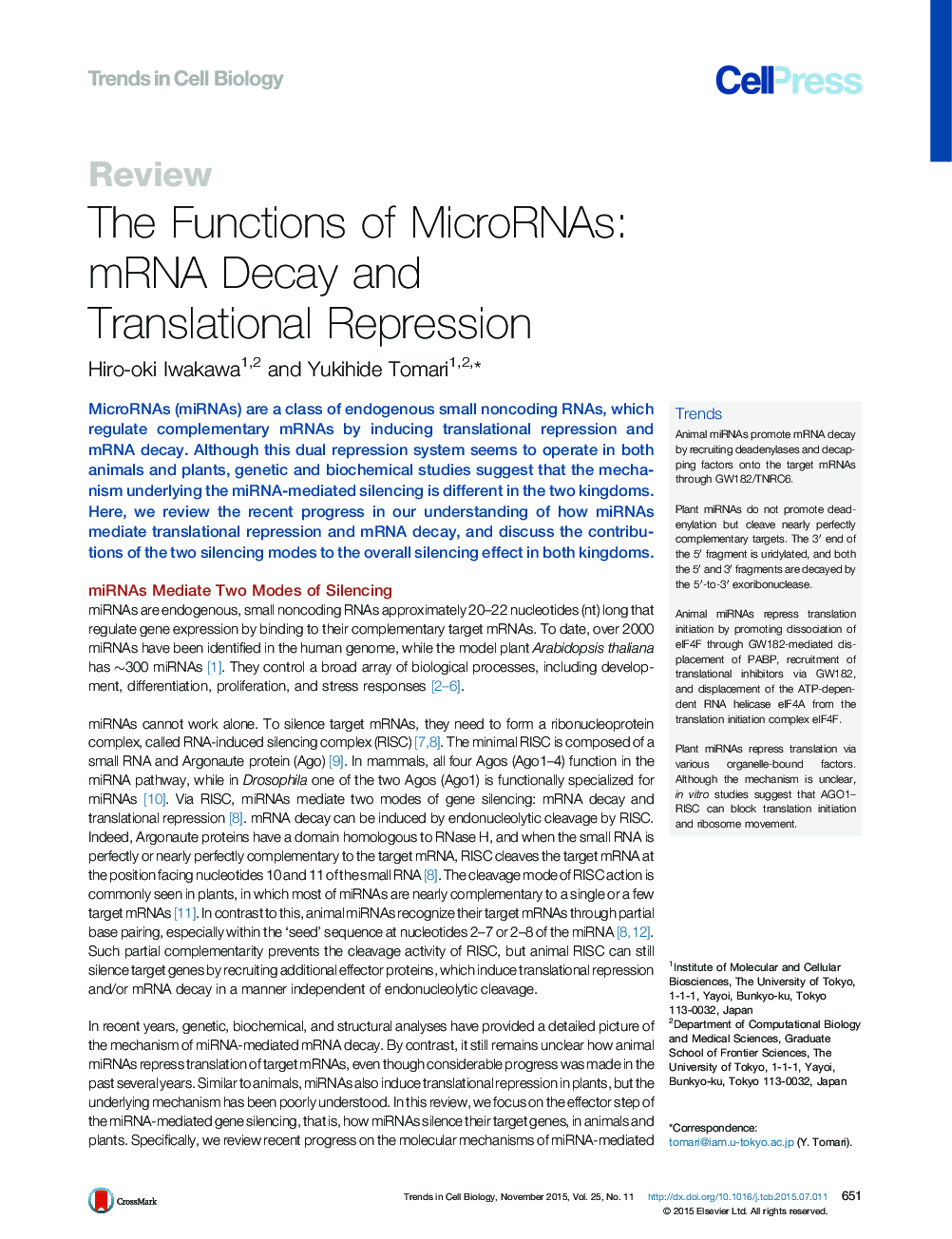| Article ID | Journal | Published Year | Pages | File Type |
|---|---|---|---|---|
| 2204281 | Trends in Cell Biology | 2015 | 15 Pages |
MicroRNAs (miRNAs) are a class of endogenous small noncoding RNAs, which regulate complementary mRNAs by inducing translational repression and mRNA decay. Although this dual repression system seems to operate in both animals and plants, genetic and biochemical studies suggest that the mechanism underlying the miRNA-mediated silencing is different in the two kingdoms. Here, we review the recent progress in our understanding of how miRNAs mediate translational repression and mRNA decay, and discuss the contributions of the two silencing modes to the overall silencing effect in both kingdoms.
TrendsAnimal miRNAs promote mRNA decay by recruiting deadenylases and decapping factors onto the target mRNAs through GW182/TNRC6.Plant miRNAs do not promote deadenylation but cleave nearly perfectly complementary targets. The 3′ end of the 5′ fragment is uridylated, and both the 5′ and 3′ fragments are decayed by the 5′-to-3′ exoribonuclease.Animal miRNAs repress translation initiation by promoting dissociation of eIF4F through GW182-mediated displacement of PABP, recruitment of translational inhibitors via GW182, and displacement of the ATP-dependent RNA helicase eIF4A from the translation initiation complex eIF4F.Plant miRNAs repress translation via various organelle-bound factors. Although the mechanism is unclear, in vitro studies suggest that AGO1–RISC can block translation initiation and ribosome movement.
